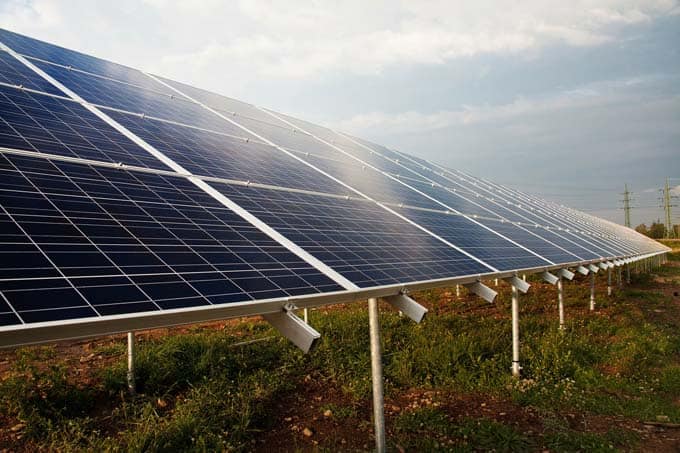An 11-point program for more photovoltaics
The decarbonization of the economy and society is urgent. Electricity is becoming a key resource in this process, and the phase-out of nuclear energy requires new solutions. It is therefore necessary to accelerate the expansion of photovoltaic systems. The association Swissolar has developed an 11-point program for this purpose.

On January 27, 2022, the Energy Commission of the Council of States began deliberations on the Federal Act on a Secure Electricity Supply from Renewable Energy Sources (jacket decree). The target values for electricity production from renewable energies envisaged in the Federal Council's dispatch on this law are, in the view of Swissolarthe umbrella organization of the solar energy industry, is set too low to achieve security of supply on the one hand and the net zero target 2050 on the other. Therefore, Swissolar has formulated corresponding demands in an 11-point program presented on January 26, 2022. For example, instead of 39 terawatt hours (TWh) of production in 2050, 50 TWh should be targeted, of which 45 TWh should come from photovoltaic systems. This value corresponds to less than half of the solar potential in Switzerland. Therefore, an annual expansion of 1100 MW (until 2025) or 2000 MW (until 2030) is required. In particular, the enormous potential of photovoltaics on facades and the expansion of hydroelectric storage power must be exploited. In this way, according to Swissolar, the energy supply can also be guaranteed in the winter months.
Create conditions for faster expansion with 11-point program
"Solar energy will provide electricity in Switzerland in large quantities - renewable, timely and cost-effective. However, for this transition to succeed, we need to build more and faster," says Jürg Grossen, president of Swissolar. Electricity imports - for example during the winter - are not an alternative, all the more so "if bilateral agreements are allowed to erode," as Grossen states with regard to the missing electricity market agreement with the EU. All in all, more subsidies are needed for the construction of new photovoltaic plants. According to projections by Swissolar, the current situation is sufficient at most for an increase of 700 MW per year.
The decisive advantage of photovoltaics is that it produces energy where it is needed. But structural measures are only one aspect. Swissolar's demands go further. Directly related to the jacket decree, for example, is the demand for an increase in the grid surcharge of 0.5 centimes per kilowatt hour, as well as a uniformly regulated purchase remuneration, which is based on the market price, but at the same time has a lower limit.
Better integration of photovoltaics into power grids
Also to be considered in this law, according to Swissolar, are the proposals for optimal integration of photovoltaics into the electricity grids. With local energy communities, as they already exist in other European countries, incentives would be set for the construction of PV systems with local self-consumption - without additional subsidies and without the need for expensive grid expansions. For example, a company with a large roof area could build a solar plant on it and sell the electricity generated there locally, e.g. to the neighboring neighborhood. This is not yet possible or attractive today, because a necessary prerequisite would be reduced grid costs.
In addition, tariff incentives must be created to regulate flexibilities at the grid connection point in order to avoid overloads. The booming electromobility will play a decisive role here: The available daily storage capacity in electric cars will be greater than the current daily production of all Swiss nuclear power plants. The power that can be flexibly switched on and off at any time will be up to ten times greater than that of today's nuclear power plants. In order to exploit this potential, the technical standards and political framework conditions must be adapted quickly.
More solar power could be produced
The other proposed measures concern spatial planning: the approval practice must be simplified, also for ground-mounted systems. In addition, the future high demand for solar panels should no longer be met solely by manufacturers from the Far East. The solar industry in Europe, which was still the leader until a few years ago, has now migrated almost exclusively to China, where around 95 percent of the components are currently manufactured - not least thanks to massive state support. This is why Swissolar is also calling on the Swiss government to adopt a little more industrial policy: our country should participate in the rebuilding of a European solar industry and invest in the education and training of skilled workers. Switzerland is already a leader in the development of integrated photovoltaic solutions, e.g. roof tiles or façade panels that produce electricity directly.
Another demand in the 11-point program includes the reduction of unnecessary additional costs and administrative barriers. Solar installers spend around half their time in the office instead of being able to build, complains Noah Heynen, Swissolar board member and CEO of Helion, Bouygues E&S InTec Schweiz AG. The procedures are complicated and make solar installations unnecessarily expensive, he says.
Photovoltaic promotion through obligation and incentives
The cantons are also addressed in the 11-point program: Already 18 cantons have introduced an obligation for new buildings to generate their own electricity, which creates a strong incentive for the construction of photovoltaic systems. More electricity could be produced on the roofs and facades of existing buildings (approx. 66 TWh) than Switzerland currently consumes. Swissolar therefore proposes to introduce an obligation to use all suitable surfaces on new buildings and renovations in all cantons. Tax incentives could also be used to increase the expansion, for example by making the costs of new photovoltaic buildings fully tax-deductible.
However, the ball is in the politicians' court when it comes to implementing this 11-point program. Experience with the CO2 Act, for example, shows that proposals that are overloaded have a hard time with the electorate. Jürg Grossen - who, as you know, is himself a member of the National Council - is convinced, however, that we cannot afford to jeopardize photovoltaics as the mainstay for achieving the net zero target. If the expansion were to be delayed, we would have a real problem in this respect.
The 11-point program in brief
- Clear and binding targets for renewable energies
- Creating professional opportunities in the solar industry
- Solar components from Switzerland and Europe
- Increase of the network surcharge and acceleration of the one-off payment
- Clear and uniform regulation of the purchase price throughout Switzerland
- Solar obligations for new construction and renovation
- Removing spatial planning hurdles
- Reduction of additional costs and bureaucracy
- Local energy communities
- Designing grid capacities dynamically, incorporating electromobility
- Tariff structures/network usage charge









